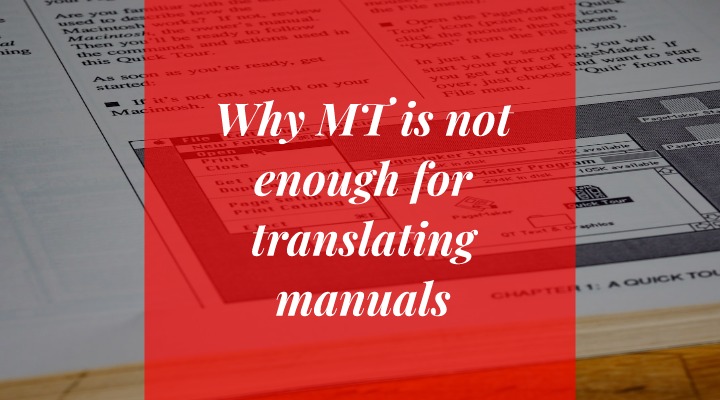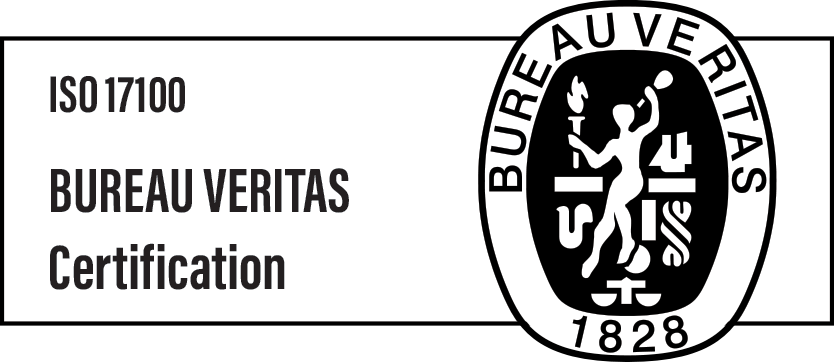Why machine translation is not enough for translating manuals

Professional translation agencies can be valuable resources for companies and organisations that need to communicate their instructions or guidance in multiple languages. They employ experienced translators who have the expertise to accurately and effectively translate manuals and other technical documents. Unfortunately, many companies are looking for shortcuts and trying to find a cheaper option by using machine translation or attempting to do the translations with their own in-house staff. This often leads to poor results and can be time and cost-consuming for everyone involved.
While it may be tempting to use other translation options, it’s important to remember that the quality of translation is paramount. Professional translators have a thorough understanding of cultural nuances, idioms and other language-specific terminology, which makes them essential for translating complex technical documents.
Why is professionalism so important? And what does manual translation look like in practice? Read on to find out more!
The importance of translating manuals into different languages
In today’s globalised world, it’s essential to translate manuals into different languages. It ensures that all customers have access to the same quality of product and service regardless of language barriers.
For instance, when an international company releases a new product, it must provide translated versions of the necessary instruction manuals in order to make sure everyone who buys the product can understand how it works and use it properly. Additionally, providing translated manuals can improve customer satisfaction and increase loyalty.
Moreover, translating manuals into different languages is also important for safety. When a user operates an electrical device, the manual should be in their native language to ensure that they understand any warnings and instructions. Inaccurate or unclear translations can lead to misunderstandings, injuries, or even fatal accidents.
Another reason is that in some industries and countries, it’s mandatory to provide translated manuals and documents. Otherwise, it can result in legal consequences.
The challenges of translating manuals into different languages
Translating manuals into different languages can be a difficult and complex process. Not only are the technical terms and jargon of a given language difficult to accurately capture in another language, but cultural differences can also present problems – what may be considered polite and common usage in one culture might not make sense in another.
This means that translators must have an in-depth understanding of both the source and target language, culture as well as their respective legal system. A lack of knowledge in any particular area may result in an inaccurate translation, which could lead to confusion or even safety concerns!
For example, Chinese characters are often composed of multiple meanings, which can make it difficult to find an equivalent word or phrase in another language. Additionally, Chinese culture places a strong emphasis on politeness and indirect communication, which can make it difficult to translate idiomatic expressions and cultural references.
The next thing is that there are often specific formatting and layout requirements for manuals that must be adhered to, which can make the translation process even more challenging. If a manual is originally written in English and needs to be translated into Chinese, the layout of the text may have to change significantly due to different character sets. This can mean that important information is missed or misconstrued when it’s transferred from one language to another.
The benefits of translated manuals for businesses and consumers
Translated manuals offer a wide range of benefits for both businesses and consumers.
For businesses, translated manuals allow companies to reach a larger and more diverse customer base. Being able to offer manuals in multiple languages eliminates barriers and opens up new markets.
The most popular benefits of translated manuals for businesses:
- Enhanced customer satisfaction: translated manuals help customers understand the product better, resulting in a more positive user experience.
- Improved global reach: translated manuals allow businesses to reach customers in other countries, ultimately leading to increased sales.
- Increased product understanding: translated manuals make it easier for users to understand how the product works.
- Created brand image: releasing manuals in multiple languages demonstrates that the company values its customers from all over the world.
For consumers, translated manuals provide a better user experience. Having access to instructions in their native language ensures that customers are able to use the product effectively and enjoy the full range of features it offers.
The most popular benefits of translated manuals for consumers:
- Increased understanding: translated manuals provide people with the opportunity to access instructions and technical information in their native language.
- Improved customer experience: with translated manuals, customers are able to find the answers they need easily.
- Increased safety: translated manuals allow customers to follow instructions more accurately, reducing the likelihood of accidents and malfunctions.
Overall, translated manuals can be a powerful tool for businesses and consumers to connect and communicate effectively across language barriers.
The impact of translated manuals on the global economy
Translation of business manuals is an important part of the global economy. It enables manufacturers and service providers to communicate clearly with customers in different parts of the world. This can also create new job opportunities and stimulate economic growth in regions where businesses are expanding.
Translation also helps businesses build relationships with international partners by ensuring they have access to vital information and resources regardless of language barriers. This allows companies to expand their reach into foreign markets and compete on a global scale.
Furthermore, translated manuals can also have a positive impact on consumers by providing them with access to products and services that they may have otherwise been unable to use or understand. For example, a user in the United States who does not speak Chinese may need to purchase and use a computer that is made and sold in China. Without access to translated versions of the product manual or instructions, this user would be unable to learn how to operate their device.
In some cases, translated manuals can help to bridge the gap between cultures and countries by providing users with information relevant to their specific language or cultural background. This helps break down cultural divides and allows everyone an equal opportunity for success regardless of their native language.
The future of manual translation in the age of digitalisation
The rise of digitalisation and the proliferation of machine translation technology have posed a significant challenge to manual translations. With the advent of digital technology, manual translation may seem like it’s being replaced by automated methods and machine learning-based applications.
However, despite these advancements, manual translation will continue to play an important role in the global economy. While machine translation can provide quick and efficient translations, it can often lack the cultural understanding that is necessary for accurate and effective communication. This is because machines are only able to translate words literally and lack the ability to interpret context or cultural nuances – something that human beings can do easily.
Manual translations also tend to be more flexible than their automated counterparts, as they can take into account changes in local dialects or new trends in language usage over time. In addition, there will always be certain types of texts which require a human touch for optimal results.
Are you looking for an LSP company that will help translate (and localise) your manuals? You’re in the right place! Get a quote today!

